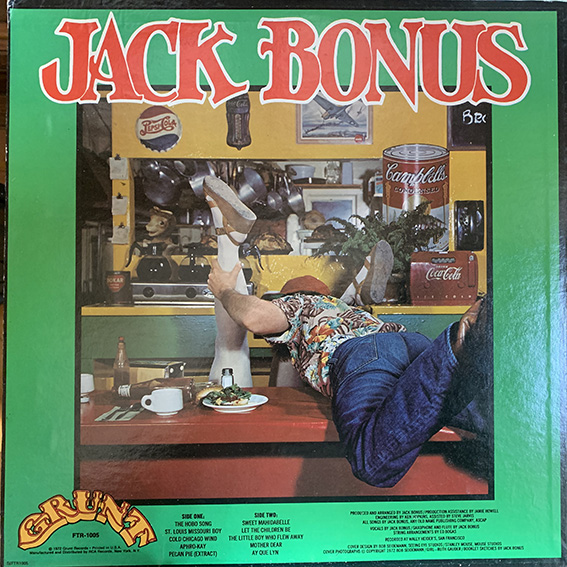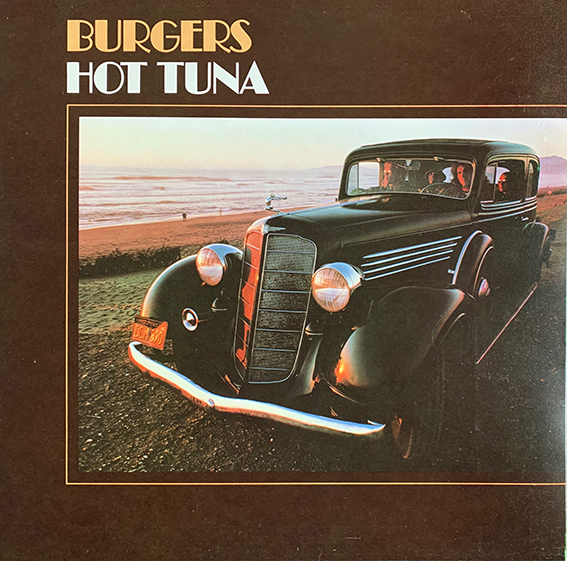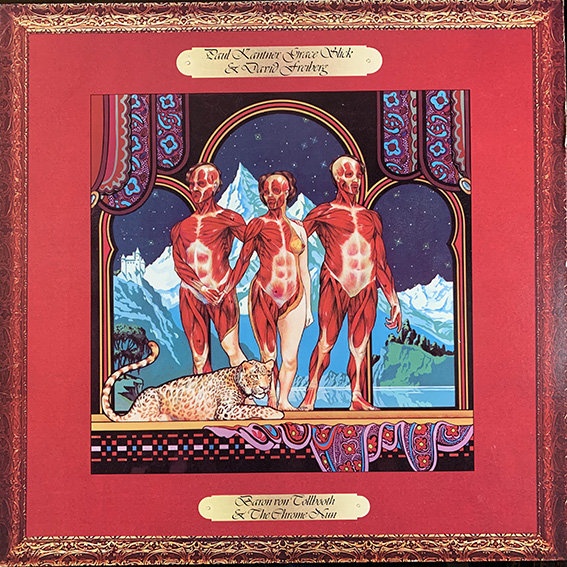By Peter Viney & Rob Millis … inextricably mixed together …

Jefferson Airplane are close to my heart. I enjoy the incongruity of cruising along gently in a staid family saloon with the CD player blasting out Up against the wall … Up against the wall … Tear down the walls, motherfucker … from 1970’s Volunteers album. I’ve put as much money in the jukebox for White Rabbit as any other song in my life.
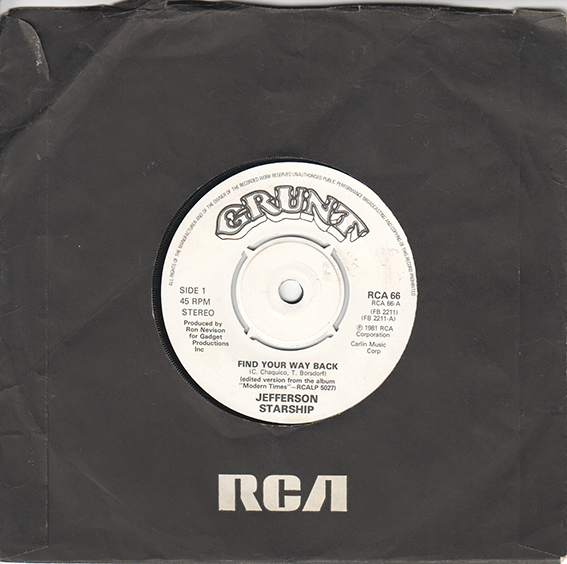
Grunt was Jefferson Airplane’s artist label, wholly distributed, manufactured and marketed by RCA. When they sold enough to use up the picture sleeves, they used plain black (as RCA often did) or the black RCA sleeve used for subsidiary labels.
The story is complex as members embarked on side projects and as Jefferson Airplane gradually morphed into Jefferson Starship then Starship. The question comes … what is a group? Ronnie Wood was a Rolling Stones employee from 1976 to 1990 when he officially became a partner.
The classic Jefferson Airplane was Grace Slick- vocals, keyboards, Paul Kantner- guitar- vocals, Marty Balin- guitar- vocals, Jorma Kaukonen – lead guitar, vocals, Jack Casady – bass, Spencer Dryden – drums, vocals.
Marty Balin and Spencer Dryden were variously in and out, and Grunt Records five partners were Grace Slick, Paul Kantner, Jorma Kaukonen, Jack Casady and Bill Thompson (their manager). So we assume by 1971 this was “the group.”
The deal was set up by Airplane manager, Bill Thompson. He got $10 million out of RCA, with Airplane entitled to control recording, design and business. Grunt had freedom (initially) to record whatever they wanted and RCA would sell it. They committed to make five Jefferson Airplane albums, three Hot tuna albums, three Paul Kantner albums and one Grace Slick album.
Paul Kantner: Grunt was an attempt to try to provide a community base, to encourage local bands as well as our own interests. We thought we could do it … but to be a record company and a musician was just too much.
Quoted in Jeff Tamarkin, Got A Revolution: The Turbulent Flight of Jefferson Airplane, 2005
Jorma was less optimistic:
Inspired, I guess, by The Beatles’ Apple, The Airplane decided that it would be a good idea to have our own record label too. We called it Grunt Records. Even at the time, it made no sense to me. I could barely deal with my own productions much less someone else’s. Even after all these years I can’t believe that we were able to make a deal with RCA to fund this. None of us were competent as Artists & Repertoire (A & R) people and we certainly weren’t talent scouts. Except for Papa John Creach, all of our other “big discoveries” have long since been relegated to the dustbins of history.
Jorma Kaukonen Been So Long: My Life & Music 2018
Bark was the first Jefferson Airplane album to carry the Grunt label (FTR 1001) in 1971… and it was elaborate with a creased paper bag over the album, which had a fish on the inner sleeve. Joey Covington had replaced Spencer Dryden on drums, and the new member was 53 year old violinist Papa John Creach. I found Papa John Creach’s presence amusing. I saw Curved Air a few times in 1970, and with Sonja Kristina on vocals and Darryl Way on violin, I described them in a letter as sounding like “Jefferson Airplane with violin.” A few months later Jefferson Airplane indeed had violin.
The Bark / Grunt launch party lasted ten hours and cost $35,000.
Bark gallery ; click to enlarge
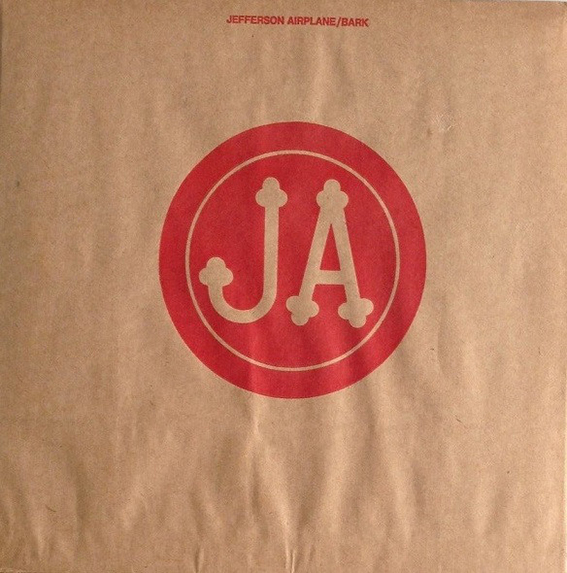
outer bag 
outer bag rear 
inner sleeve
Woe betide you if you’ve discarded the outer bag. It’s essential for second hand value. Don’t fret too much … that’s a mere £15 mint according to Rare Record Price Guide 2022. Discogs “highest sale” is £9, though there are sellers advertising it at £30 to £45. With all the bits … bag, lyric insert … intact, I don’t think they’re ambitious. I’ve seen it at £20 and £25, and they weren’t mint either. Collectability of early 70s Grunt LPs is hampered by RCA’s Dynaflex ultra-thin LP pressings which collectors consider inferior to heavier discs. They may be judging harshly… I have a copy of Jorma Kaukonen’s solo Quah which is apparently as close to mint as you get. The sound quality is very good. No hiss. No crackle.
Grunt label designs … click to enlarge

Bark: first LP FTR-1001 
Pretty As You Feel: Jefferson Airplane, first 45, 65-0500 
Long John Silver: Jefferson Airplane 45 demo, 1972
Hi jack the starship …
OK, it was just an RCA vanity label in more ways than one. The initial surge of Jefferson Airplane singles were on RCA, and by the time they formed Grunt in 1971, they had already plotted how to hijack the first starship to be built, and transport the hippies across the galaxy. The story forms the basis of the first use of the name Jefferson Starship on the 1970 LP Blows Against The Empire (essentially a Kantner vehicle with almost all the Airplane and sundry Dead/CSNY members weighing in too) and it seemed like a good idea at the time.

That was on RCA, but the next loose affiliation of Bay Area friends and the second Grunt album was Sunfighter by Paul Kantner and Grace Slick. It was hot on the heels of Bark and the cover picture is their baby, China. News reports at the time suggested the child would be named God, but Grace Slick admitted later she was winding up the very devout hospital staff. They’re all there … Crosby, Nash, Jerry Garcia. the Tower of Power horn section, the Edwin Hawkins Singers. Craig Chaquico joined them (on one track) – he was just seventeen, and would become the mainstay of both Jefferson Starship and Starship – he is the only person who appears on every album by both entities.
The best-known track was Silver Spoon, aka the cannibalism track, in which Grace suggests eating one’s friends with your fingers and hands
Gallery … Jack Bonus … click to enlarge
The next up was Jack Bonus by Jack Bonus. It’s a notoriously cheesy sleeve (and sought after for it). Bonus was a Bay Area session player, and is credited with vocals and sax, and he has a great organist, Tom Coster on Pecan Pie. The accordion player on Sweet Mahidabelle is extraordinary and is Jon Dettrileau. It’s all well-played and varied and at times weird Americana, and being an artist label, he gets an 8 page insert with handwritten lyrics (labelled extra added BONUS). It’s nothing like you’d expect from anything else Airplane members were doing. He also appears on Earth Opera’s The Great American Eagle Tragedy. It’s apparently a minor cult album.
Hot Tuna
The most interesting Grunt-signed genuine Airplane offshoot was Hot Tuna. They started in 1969 as a side project while Grace Slick was recovering from throat surgery. The core was always Kaukonen and Casady but they played a few gigs with Paul Kantner and Joey Covington, and then started performing as a support set to Jefferson Airplane.
Their first LP Hot Tuna on RCA was culled from an informal gathering of Jorma Kaukonen on acoustic guitar and Jack Casady on bass revisiting Kaukonen’s speciality of fingerpicked country blues and matching this to Casady’s electric bass. It was recorded during a week of live shows.
West Coast bands have a unifying characteristic: the bass player is more prominent than the drummer(s). Jack Casady led Airplane from bass. Phil Lesh did the same with the Grateful Dead, having more presence than their twin drummers. However much the technique of the Dead’s drummers is praised, they are still quieter and less impressive than the bass player. (It was the same in Los Angeles: Love’s Ken Forssi was an experienced player prior to joining the band; The Byrds in their prime had seasoned bluegrass musician Chris Hillman on bass, both pitched against less technically adept drummers. British bands with virtuoso bass players matched them with drummers of equivalent skill: Bruce and Baker in Cream, Wetton and Bruford in 1973/4 King Crimson. West Coast bands just let the bass player take the weight; by the time the Byrds got to Skip Battin (bass) and Gene Parsons (drums) they were a completely different band).
Hot Tuna carried on with Jorma’s brother Peter on second guitar, then Marty Balin and Papa John Creach played with them before Balin left both bands. Their second album First Pull Up Then Pull Down was also issued on RCA. The first two albums are proof that “white guys CAN play the blues.”
Gallery : Burgers … Hot Tuna, 1972 … click to enlarge
Fittingly the first Hot Tuna album to wear the Grunt label was Burgers, the 1972 release that marked the shift from being a smaller scale Airplane side project to the main focus for Kaukonen and Casady. Papa John Creach and Sammy Piazza were the other members. By this time, the band was largely electric and Burgers was the perfect blend of the old-timey material and originals. Burgers is the peak; the American Beauty/Band/Into The Purple Valley of the Tuna catalogue.
Hot Tuna had a firm eye on the Jefferson Airplane hourglass and by early 1972 could see very little sand left in the top. They were right.
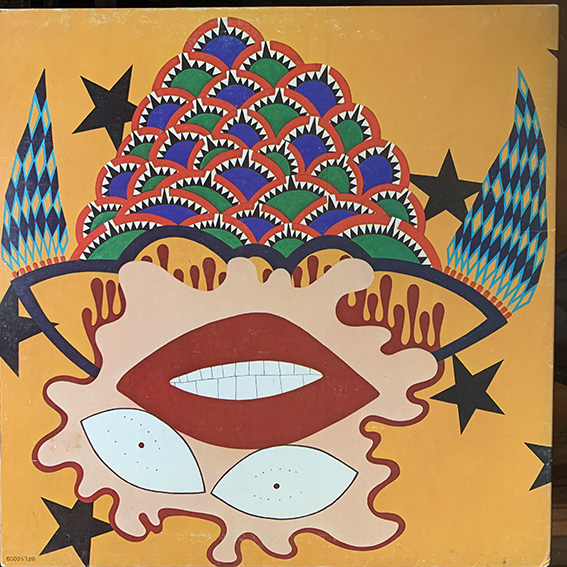
Tuna toured with the Burgers band in 1973 and recorded The Phosphorescent Rat but Kaukonen also recorded Quah with Tom Hobson (although Casady produced it!) and elected to tour acoustically.
Creach diverted to Jefferson Starship and Piazza joined San Francisco live favourites Stoneground. Following this, Hot Tuna changed shape completely and became a loud power trio (with occasional organ from Nicky Buck) for what Kaukonen calls ’the rampage years’; this era saw the release of America’s Choice, Yellow Fever, Hoppkorv and a double live album Double Dose: a mix of rampage Tuna and Kaukonen solo acoustic performances. They bowed out in 1979 with the compilation Final Vinyl but come the late eighties were back again – but the sun had long passed over the Grunt yard-arm by then.
Hot Tuna albums gallery – click to enlarge

The Phosphoresent Rat 
Yellow Fever 
America’s Choice 
Hoppkorv 
Double Dose 
Final vinyl
Papa John Creach … click to enlarge
Papa John Creach’s eponymous album was the third Grunt release. Creach was by then a band member. Papa John Creach had been introduced to Jefferson Airplane and Hot Tuna by Joey Covington. We shouldn’t be surprised by blues violin … it was an easy instrument to find, eminently portable and if you’ve heard solo Irish jig players, great for dancing. Both his first two albums, Papa John Creach and Filthy! have some tracks which are basically Hot Tuna … Casady, Kaukonen, Piazza and Creach. He also has star guests like Grace Slick and Jerry Garcia and Carlos Santana (who gets his name on the gatefold track list but not on the outer sleeve). Papa John’s Down Home Blues features sublime guitar from Santana. He has a wide range … Over The Rainbow on the first album is with the Los Angeles String Section, and it is the Judy Garland song. He does Danny Boy with just bass and organ. String Jet Rock on the first album is basically the electric post-Burgers sound of Hot Tuna. They also appear on Everytime I Hear Her Name which is a truly great example of Jack Casadys grungiest bass playing on an archtypal blues. Filthy Funky on the second album is pure disco funk, followed by No More Country Girls which is classic blues.
The third album Playing My Fiddle For You was with his band, Zulu. He was a fixture, working with various Tuna and Starship combinations right up till his death in 1994.
Long John Silver
The next full Jefferson Airplane album (the last true studio album by the originals), Long John Silver came in an elaborate cigar box outer card sleeve with instructions on how to fold it into a box. It opened up to a photo of marijuana. You need to have kept that box too. And the inner sleeve with cigars.

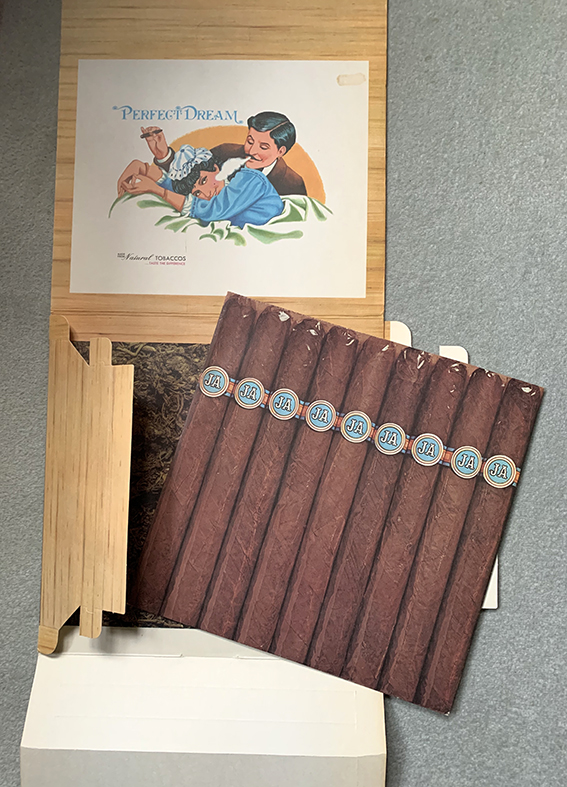
Baron von Tollbooth …
When you have your own label, you can afford luxuries like illustrated inner sleeves. Baron Von Tollbooth by Paul Kantner, Grace Slick and David Freiberg continues Kantner’s preoccupations from Blows Against The Empire and Sunfighter.
Jefferson Starship’s new guitarist and songwriter, Craig Chaquico, had come from Grunt act Jack Traylor & Steelwind, one of the few Grunt acts to not feature a ex-Airplaner or then current member.
They were recruiting acts. Marty Balin produced local band Grootna, but that went to Columbia / CBS not Grunt. Jorma’s brother Peter Kaukonen recorded Black Kangaroo, a vehicle for his meaty, Hendrix-y guitar talents. That’s one of several Grunt LPs which may have been imported rather than pressed in the UK.
Gallery: 1, Peter Kaukonen … click to enlarge

Come: 1, LP 
Black Kangaroo, Peter Kaukonen LP
Without a shadow of a doubt, the most daring Grunt release was that of the band One (or 1), a very experimental nine-piece band fronted by an eccentric frontman who went by the name of Reality D. Blipcrotch. He vocalized rather than sang, and often without words. i.e. noises. He insisted they had to record a wave on a particular day at an exact time, from a rowing boat with microphones above and below. They actually recorded it too. Bless. He also wanted a marijuana leaf to emerge from track three and the album designed to self destruct at the end of side two, so his “fans” would have to buy it again.
The cover’s a bit dull.
Another album was recorded featuring Richmond Talbott, a pal of Jorma’s. It was given a catalogue title, Gettin’ Plenty. Jorma said the result was so atrocious that they binned the tapes and cut their loses.
By 1973, manager Bill Thompson was the label director. In 1974, all the artists outside the Airplane / Starship / Hot Tuna axis were dropped.
Jefferson Starship …
Jefferson Starship became a proper band in 1973 (who later mutated into an AoR radio-friendly Starship: somehow, they managed to change shape over time from most of the 1972 final Airplane line-up with a new guitarist (Craig Chaquito) and bassist (Pete Sears), then over the next decade or so, change all the personnel and end up as the eighties hitmakers. Kantner, Slick, Balin, Freiberg, Creach and Barbata were all ex-Jefferson Airplane members who did a tour of duty in the remade combo at some point. All save Balin also contributed either solo or collaborative releases to the Grunt catalogue.
Once they’d released Dragon Fly in 1974, Jefferson Starship suddenly became a hit band, probably to their surprise. They had ten albums left in them, most charting, plus a plethora of hit singles. They shared the writing credits around, but too often Grace Slick is on co-vocals when I’d want her up front. The thing is:
You always filled my lips with kisses
You always filled my eyes with tears
from Caroline … may have the roar and impetus of Airplane … Sears bass propels Jefferson Starship well … it may be co-written by Marty Balin and Paul Kantner, but it lacks the thought provocation of…
You call it rain
But the human name
Doesn’t mean shit to a tree
(Eskimo Blue Day, Slick-Kantner)
Jefferson Starship had showed initial promise with the trio who recorded Baron Von Tollbooth and the Chrome Nun (Slick; Kantner; Freiberg) and picked up more familiar faces in Papa John Creach, Marty Balin and John Barbata early on. However – it was NOT Jefferson Airplane II artistically; yet another dose of stadium AOR that the seventies was so fond of. By the eighties, Balin had come and gone, Slick had gone and come back again, frontman Mickey Thomas had joined (ex-Elvin Bishop) and the venerable Kantner bailed out eventually. Dropping their Jefferson prefix, they became huge hitmakers and the wide-eyed inventiveness of After Bathing at Baxter’s was but a distant memory.
The rule was that while Paul Kantner was a member, it was Jefferson Starship. When Kantner left, it became Starship.
Jefferson Starship hit albums … click to enlarge

Dragon Fly 

Spitfire 






Grace Slick’s solo singles (notably Dreams in 1980) reside on the RCA label, as did We Built This City (on Rock & Roll) which has topped polls for worst AoR song. It’s not THAT bad, and both of us bought it, just a long way down from White Rabbit, Crown of Creation or Wooden Ships.
Starship were on Grunt in 1980, but RCA for We Built This City (UK #12) and Sara then back on Grunt for their #1 hit in 1987, Nothing’s Gonna Stop Us Now.
Grace Slick, once the most chilling voice in rock, now devotes herself to painting and has a gallery in Sausolito.
Jefferson Starship had various revivals. I missed the ones I really wanted to see … The Brook, Southampton in 2002, 2004 and 2012. Basically it’s a small club venue with a current capacity of 150. Yes, Paul Kantner was there. They had a blonde female singer, Diana Mangano. The set list online for 2004 was almost entirely pre-1972 Jefferson Airplane with the addition of Silver Spoon (the one about cannibalism from Sunfighter) and HiJack from Blows Against The Empire. The only Starship number was Girl In The Wood. It’s hard to know how they could afford to play there.
Hot Tuna continue to perform to this very day, Jorma & Jack celebrating the 50th anniversary of the band in 2019; Jorma (and Jack when feasible) delighting the pandemic-stricken world with regular free streamed performances from Jorma’s Ohio ranch which earned him a top ten quarantine entertainment rating in the New York Times.
Grunt albums
The list of Grunt releases is longer than the list of albums Discogs.com notes as UK releases. My copies of Grace Slick’s Manhole, Papa John Creach and Filthy are all American imports . I suspect that RCA decided some releases were strictly avid fan appeal and didn’t bother to press them in the UK … they just brought in a few boxes to satisfy demand.
We list the US chart which shows how Jefferson Starship were a commercially more successful band. They also did well on the singles charts.
| artist | title | year | US chart |
| Jefferson Airplane | Bark | 1971 | #11 |
| Paul Kantner & Grace Slick | Sunfighter | 1971 | #89 |
| Papa John Creach | Papa John Creach | 1971 | |
| Hot Tuna | Burgers | 1972 | |
| Jack Bonus | Jack Bonus | 1972 | |
| Peter Kaukonen | Black Kangaroo | 1972 | |
| Jefferson Airplane | Long John Silver | 1972 | #20 |
| 1 | Come | 1972 | |
| Papa John Creach | Filthy! | 1972 | |
| Jefferson Airplane | Thirty Seconds Over Winterland | 1973 | #53 |
| Paul Kantner, Grace Slick, David Freiberg | Baron Von Tollbooth & The Chrome Nun | 1973 | |
| Joe E. Covington | Fat Fandango | 1973 | |
| Jack Taylor & Steelwind | Child of Nature | 1973 | |
| Jorma Kaukonen | Quah | 1974 | |
| Grace Slick | Manhole | 1974 | |
| Hot Tuna | The Phosphorescent Rat | 1974 | |
| Papa John Creach | Playing My Fiddle For You | 1974 | |
| Jefferson Airplane | Early Flight | 1974 | |
| Grace Slick, Paul Kantner, Jefferson Starship | Dragon Fly | 1974 | #11 |
| Hot Tuna | America’s Choice | 1975 | #75 |
| Jefferson Starship | Red Octopus | 1975 | #1 |
| Hot Tuna | Yellow Fever | 1975 | |
| Jefferson Starship | Spitfire | 1976 | #3 |
| Hot Tuna | Hoppkorv | 1976 | |
| Jefferson Airplane | Flight Log | 1977 | |
| Jefferson Starship | Earth | 1977 | #5 |
| Hot Tuna | Double Dose | 1978 | |
| Hot Tuna | The Last Interview? | 1978 | |
| Jefferson Starship | Gold | 1979 | #20 |
| HotTuna | Final Vinyl | 1979 | |
| Jefferson Starship | Freedom At Point Zero | 1979 | #14 |
| Jefferson Starship | Modern Times | 1981 | |
| Jefferson Starship | Winds of Change | 1982 | #26 |
| Jefferson Starship | Nuclear Furniture | 1984 | #28 |
| Starship | Knee Deep In The Hoopla | 1985 | #7 |
| Starship | No Protection | 1987 | #12 |
Grunt 45s … click to enlarge
Only one Starship 45 was on Grunt … their other hits were all on RCA.

Jane: Jefferson Starship, 1979
early copies in picture sleeve
Jane: Jefferson Starship 1979
picture sleeve early, then plain black
Light The Sky On Fire: Jefferson Starship 1979
| artist | title | year | chart |
| Jefferson Airplane | Wild Turkey / Pretty As You Feel | 1972 | US #60 |
| Hot Tuna | Keep On Truckin’ | 1972 | |
| Jefferson Airplane | Long John Silver | 1972 | US #104 |
| Jefferson Starship | Miracles | 1975 | US #3 |
| Jefferson Starship | With Your Love | 1975 | US #12 |
| Hot Tuna | It’s So Easy | 1976 | |
| Jefferson Starship | Count On Me | 1978 | US #8 |
| Jefferson Starship | Runaway | 1978 | US #12 |
| Jefferson Starship | Light The Sky On Fire | 1979 | US #66 |
| Jefferson Starship | Jane / Freedom At Point Zero | 1980 | US #14 UK#2 1 |
| Jefferson Starship | Girl With Hungry Eyes | 1980 | US #55 |
| Jefferson Starship | Find Your Way Back | 1981 | US #29 |
| Jefferson Starship | No Way Out | 1984 | US #23 |
| Starship | Nothing’s Gonna Stop Us Now | 1987 | US #1 UK#1 |
Starship RCA releases included We Built This City (US #1), Sara (US #1), Tomorrow Doesn’t Matter Tonight (US #26). It’s Not Over (Til It’s Over) (US #9), It’s Not Enough (US #12). They were still releasing singles in 2007, 2013, 2014 and 2016.
Jefferson Airplane reunited in 1989 for Jefferson Airplane, but Grunt and RCA were both long gone, and they released on Epic.

